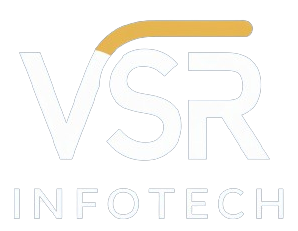Automation Testing with Selenium Course
- Home
- Courses
- Automation Testing
Automation Testing with Selenium Curriculum
- Learn about the origins and evolution of Selenium, an open-source automation testing tool, and its integration with Java for building robust test automation frameworks.
- Step-by-step instructions on installing Java Development Kit (JDK) and configuring Selenium WebDriver to set up the development environment for Java-based Selenium testing
- Understand the essential Java concepts and features required for effectively using Selenium WebDriver, including object-oriented programming principles and basic syntax.
- Learn how to configure Selenium WebDriver for testing on various web browsers (Chrome, Firefox, etc.) and execute test scripts to ensure cross-browser compatibility.
- Identifying locators(id,name,linktext,partiallinktext,className)
- Identifying xpath in chrome and Firefox browsers using chropath
- Identifying CSS locators with chrome and Firefox Add-ons
Practice
- Techniques to automate WebElements
- Handling Static and Dynamic dropdowns with Webdriver API
- Handling checkboxes
- Handling Radiobuttons with customized xpath
- Handling Radiobutton dynamically
- Types of Alerts and Methods to handle them
- Handling Java Alerts
- WebElements validations
- disabled/enabled UI Elements validations
- End-to-end scenarios etc
- Understand synchronization techniques to handle timing issues and ensure that test scripts wait for web elements to load properly before performing actions, enhancing test reliability.
- Implicit wait with real-time scenario
- Explicit wait with real-time scenario
- Window handle concepts
Handling multiple windows - Handling ajax/mouse interactions
- Actions classes
- Working with child-windows
- Handling Frames
- Real-time exercises
- Optimized solutions for printing links
- Limiting Webdriver scope
- Opening links in seperate tabs and getting titles of it
- Handling different Calenders
- Identify common challenges in Selenium test automation and learn practical solutions and best practices to overcome them, improving test efficiency and reliability
- Identifying frames from HTML view
- Element Hidden or invisible-how to validate
- Writing Generic functions to identify frames/windows
- Handling multiple frames
- Handling Auto suggestive dropdown options
- Working with Javascript Executors
- Handling HTTP certifications
- Taking Screenshots in Selenium
- Killing the Process and Cookies using Selenium
- Customized way of identifying locators
- Set up and utilize Selenium Grid to perform parallel execution of test scripts across multiple browsers and environments, optimizing test execution time.
- Registering Hub with nodes for execution
- Registering nodes with Browser drivers
- Importance of DesiredCapabilities and Remote Webdriver
- Cross-browser testing rules
- Master the TestNG testing framework for organizing and executing test cases, generating test reports, and implementing advanced testing features like data-driven and parameterized testing.
- Usage Advantages
- Running testcases in TestNG without Java compiler
- Importance of xml file in TestNG configuration
- Prioritizing the Test cases with TestNG
- Include and Exclude mechanism to control Testcases
- Usage of Groups functionality in TestNG
- TestNG Annotations parts
- Parameterising from TestNG xml file
- DataProvider Annotation – Parameterizing testcases
- Listeners Interface in TestNG framework
- Running Tests in parallel and generate Reports
- Learn how to set up global environmental variables and create reusable components to enhance test maintainability, scalability, and reusability in Selenium automation.
- How to write Global parameters with java code
- Why we should not hard code with data ?
- Data driving parameterization from Properties file
- How to deal with reusable components
- Understand Maven’s role as a build management tool for Java projects and its integration with Selenium automation projects for dependency management and project structuring.
- Importance of Maven in Framework development
- Installing and configuring Maven
- Understanding Terminologies of Maven
- Creating Maven Project and importing into eclipse
- Understanding POM.xml file and its dependencies
- Importance of Jenkins in Test frameworks
- Install and configure Jenkins
- Configuring Jenkins Settings and Workspace
- TestNG Reports for Jenkins Jobs
- Implement data-driven testing using Excel spreadsheets as a data source to drive test scenarios and parameterize test inputs, enhancing test coverage and flexibility.
- Apache POI API and Download instructions
- Strategy to Access Excel Data
- Practice exercises
- Integrate logging frameworks like Log4j with Selenium test automation to capture test execution logs, debug issues, and improve test traceability and maintainability.
- Log4j and its usage
- Importing log4j into Eclipse project
- Importance of log4j xml file
- Testcase logging with log4j example
- Learn the Page Object Model (POM) design pattern and Page Factory concept to create maintainable and modular test automation frameworks, enhancing code reusability and readability.
- What is POM ?
- Creating page object
- Constructor in classes
- OR Mechanism
- Page factory annotations
- Practical examples explaining Page factory model
- Build a robust test automation framework from scratch using Selenium WebDriver, incorporating best practices, design patterns, and modular architecture for scalable and maintainable automation.
- Creating Maven Project with eclipse integration
- Configure framework dependencies in POM.xml
- Implement Pageobject Mechanism to drive tests
- Creating multiple tests with centralized data
- Parameterizing the Tests with multiple data with TestNG
Converting - Framework into TestNG and configuring TestNG xml file
- Integrating log4j logging API into framework
- Fixing the framework issues
- Screenshots on failure-TestNG Listeners
- Extent HTML reports on Test Execution
- Understand JDBC (Java Database Connectivity) and its integration with Selenium for database testing, enabling interaction with databases to validate data integrity during test execution.
- Executing conditional statements
- JDBC Drivers
- Java.sql package
- Statement Interface
- Connection Interface
- Firing select, insert, update and delete
- ResultSet Interface
- Queries with database using Java JDBC
- Looping the ResultSet
- Prepared Statement and Callable Statement
- Executing conditional statements
- Using Annotations of Junit/TestNg to establish connection with database when
- Using Selenium
- Installing MySQL Database and making some tables in it
- Explore SVN (Subversion) as a version control system for managing project source code, collaborating with team members, and maintaining code history in Selenium automation projects.
- Checkin and Checkout code with eclipse
- Checkin and Checkout with UI
- Installing SVN eclispe plugin – Subeclipse
- Revisions in repository
- Installing SVN client UI – TortoiseSVN
- How will SVN be useful to team?
- What is SVN?
- SVN centralized repository
- Implement behavior-driven development (BDD) with Cucumber to write feature files in plain text, automate acceptance tests, and foster collaboration between business stakeholders and developers.
- Cucumber Framework design plan
- Templete in writing Business requirements
- Templete in writing Testcases for Business Scenarios
- Advantages of BDD, why is it getting popular
- Cucumber project templete
- Understanding cucumber dependencies
- Understanding Cucumber framework terminologies
- Adding cucumber knowledge to Existing framework
- Adding page objects and handle dynamic popups in home page
- Parameterizing Selenium tests with cucumber
- Integrate Cucumber with TestNG and Maven
- Integrate Jenkins with Git and GitHub repositories for version control, enabling automated build triggering, continuous integration, and seamless collaboration in Selenium automation projects.
- Configuring/Scheduling remote Git maven project in Jenkins
- Jenkins Integration
- Creating branch/forks
- Cloning projects
- Uploading project to GIT using GIT Bash
- Git Bash commands and operations
- Configuring ssh host keys for GIT and Jenkins
- Installing GIT and GITHUB plug-in for jenkins
- Downloading and installing GIT
- What is continuous integration?
- How Jenkins helps in continuous integration
- Mailing if build fails
- Configuring/Scheduling Maven Project in Jenkins
- Build Triggers
- Executing simple batch commands
- GIT, GITHUB

Have Any Question?
Explore our range of industry-leading courses today and take the first step towards success!

